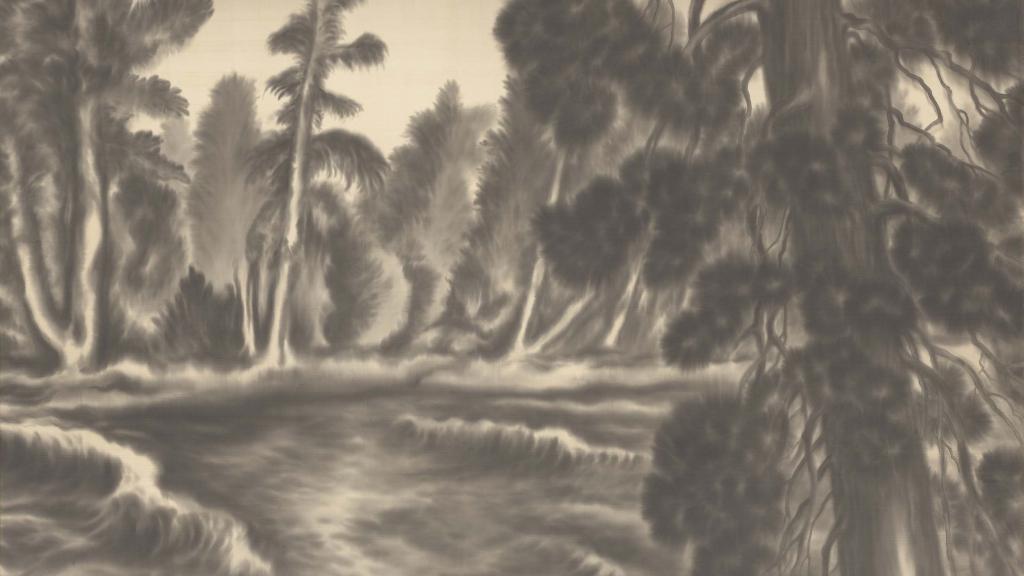Chiura Obata
Japanese-American
In the San Francisco Bay Area, Chiura Obata was the most prominent practitioner of the modern nihonga (Japanese painting) movement, which sought to reconcile the practices of traditional Japanese and contemporary European schools of art. Accompanied by his wife, Haruko Kohashi, who helped introduce ikebana (the art of flower arrangement) to the Bay Area, Obata gave hundreds of public lectures and demonstrations that introduced audiences to Japanese art and aesthetics.
Born
1885
Died
1975

What is inspiring about nature?
In this untitled landscape of 1922, Obata demonstrated the combined influences of impressionistic Japanese morotai painting and American Impressionism and Tonalism. Here, aqueous washes of black sumi ink poetically evoke, rather than topographically depict, the ethereal landscape of coastal California. This stylistic unification of East and West reflects Obata’s commitment to a global view of art, which he celebrated by cofounding the East West Art Society in 1921.
Medium
Ink and color on silk
Credit
Museum purchase, Dr Leland A. Barber and Gladys K. Barber Fund and partial gift of the Obata Family
Item ID
2001.67
Dimensions
68 1/4 x 91 1/2 in. (173.4 x 232.4 cm)
Date
ca. 1930
Country
Artist name
Chiura Obata